Published August 7, 2025 02:06PM
Destinations & Things To Do
The Best Sports Bras for Summer 2025
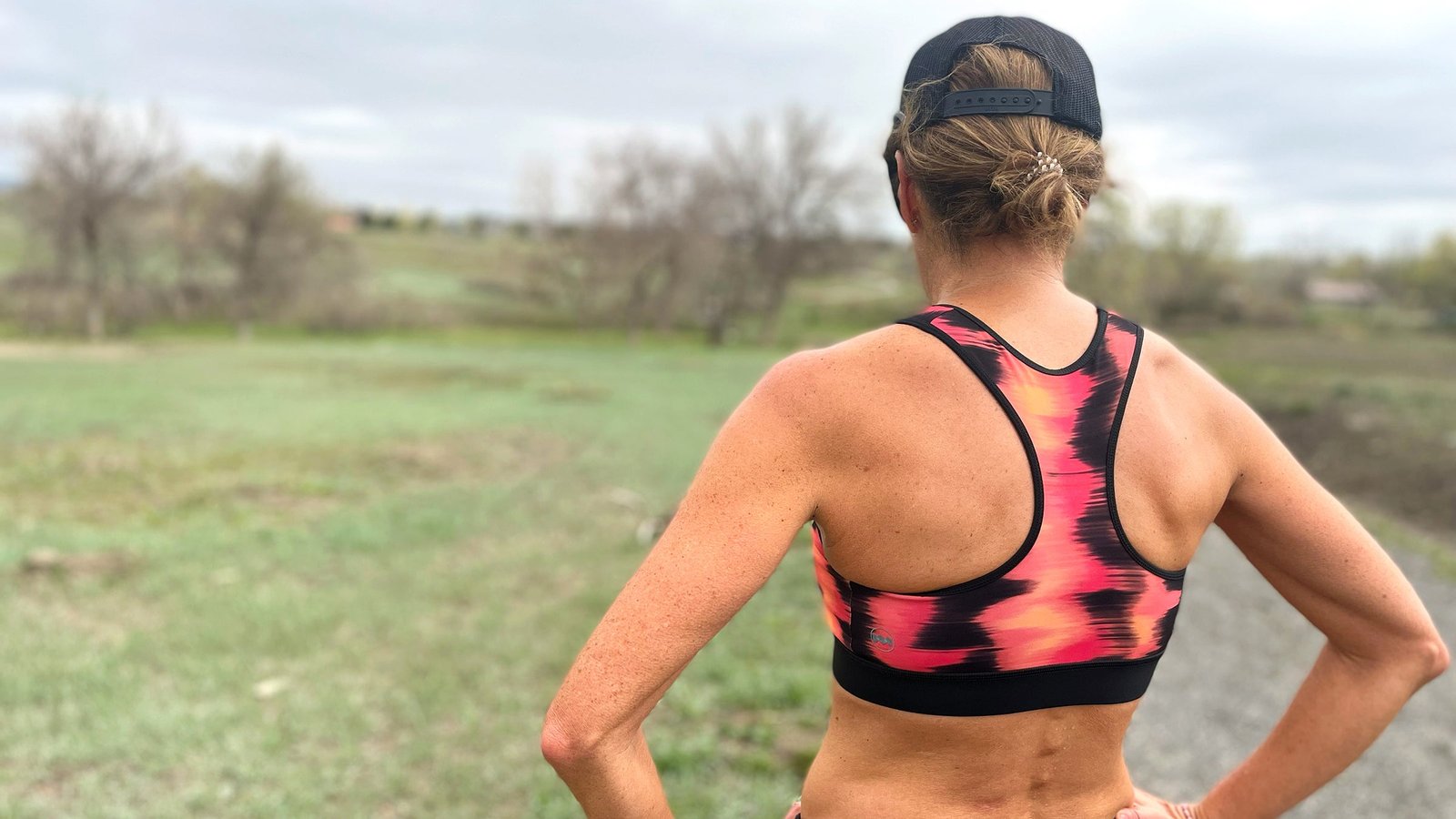
If you buy through our links, we may earn an affiliate commission. This supports our mission to get more people active and outside.Learn about Outside Online’s affiliate link policy
Eleven testers spent hundreds of hours working out in dozens of different sports bras to find the best-performing picks for every type of activity.
(Photo: Lisa Jhung)
Every woman is built differently and has a different idea of what makes the perfect sports bra. But every woman wants (and deserves) a sports bra that is comfortable and supportive, and lets her do activities with zero distraction. In light of that, we had a team of testers—all different sizes—try more than 30 of the best sports bras while hiking, climbing, practicing yoga, running, weightlifting, and more to find the models that delivered the best performance and comfort for a variety of different types of bodies, conditions, and activities.
Update April 2025: We’ve replaced the sports bras in four categories, added three new categories (best for summer, best for wearing a pack, and best simple running bra) and changed the categories of two we carried over from the fall round-up.
Best Sports Bras: At A Glance
Be sure to also check out our picks for the best women’s running shirts and tank tops.
The Best Sports Bras
(Photo: Courtesy Nike)
Best Value
Nike Swoosh Medium Support
Sizes: XXS–XXL
Pros and Cons
⊕ Fixed cups mean no pads to lose
⊕ Durable, long-lasting comfort
⊗ Pads, if you’re not a fan of them
One tester has been wearing an earlier version of this sports bra for close to 20 years. “It’s been all over the world while keeping me comfortable running, cycling, hiking, Nordic skiing, etc.,” she says. The simple, pull-on style bra wicks sweat and remains comfortable for hours. The newest version of this do-anything, durable bra comes with light padding built in (no slipping, no losing the padding in the wash), and is made with sustainable, recycled polyester materials. Its $40 price point makes it among the least expensive sports bras out there, and while it’s classified as “medium support,” it can function as high support across a range of activities for smaller chest sizes. It also lasts for-e-ver.
Best for Large Chests
Brooks Crossback 2.0
Sizes: 30–40 band, AB–DDE cup
Pros and Cons
⊕ Extremely comfortable
⊕ Molded cups stay put
⊗ Only medium impact for the largest of chests
The Brooks Crossback 2.0 bra is not the absolute most supportive sports bra for large chests during the highest impact activities, but for virtually everything else, we loved its ability to support us comfortably. While most sports bras intended for bigger chests achieve support by either compressing tightly or encapsulating with stiff materials, zippers, and/or burly fasteners, the Crossback 2.0 utilizes strategic engineering—reinforced materials in the shoulder straps and chest band—and a wide range of size options for an almost custom fit. Testers loved how this bra’s smooth, flat crossback straps didn’t dig into shoulders and worked great under a backpack, as well as the lack of irritating seams and the soft but effective encapsulation.
“This works nicely for medium-impact activities without smashing you to death,” said a tester. “Love the snug fit of the material, but not snug as in too tight,” said another. “I can’t say enough,” gushed yet another. “I’m obsessed with this bra and how this bra performs and that it never chafes me at all.”
Our team wore this sports bra skiing, hiking, weightlifting, cycling, and running, and only one tester craved more support while running. It also dries quickly from sweat or after washing and is comfortable during prolonged wear.
(Photo: Courtesy Patagonia)
Best for Hot Weather
Patagonia Live Simply Bra
Sizes: XXS–XL
Pros and Cons
⊕ Minimal and comfortable
⊕ Dries extremely quickly
⊗ Can fit a little loose under the arms
We’ve worn this bra hiking in 106-degree heat, sweaty weight-lifting sessions, running in all sorts of weather, and jumping in and out of lakes. This great sports bra remained comfortable throughout all of those athletic activities and even while working at a desk for hours.
Its bonded seam construction lies flat and smooth with zero irritation, and the extremely lightweight, soft, 100-percent polyester tricot fabric dries ridiculously quickly. We appreciated that, along with the anti-microbial treatment (HeiQ Mint) that combated odors when we kept the bra on after workouts. Because it doesn’t contain Spandex, the comfortable sports bra isn’t as supportive as some others, but it also doesn’t stretch out as much. It’s best for low-impact, or any activity for A to C cups.
Best for High Impact
Rabbit UtiliBRA-vo
Sizes: XS–XL
Pros and Cons
⊕ Über-secure phone pocket
⊕ Classic racerback fit
⊗ Not the most breathable
If you love classic racerback bras, add a few of these to your underwear drawer. Chances are good they’ll fit and support you well, as one of our testers raved: “The fabric hits a sweet spot of compression that I think will please 85 percent of runners—not too much, not too little.” This sports bra also has the most secure back phone pocket we’ve ever used, without being over-designed. “Most phone pocket bras try to be all fancy and featured and space-agey,” another tester said. “This is the first one I’ve tried that’s basically just a regular old racerback, both in terms of fit and looks.” The polyester-spandex fabric is slightly thicker than the other favorites, making it a great sports bra for high-impact activities year-round.
(Photo: Courtesy Janji)
Best for Wearing on Its Own
Janji Pace Sports Bra
Sizes: XXS–XXXL
Pros and Cons
⊕ Best range of sizes among pull-over bras
⊕ Unique, flattering and supportive straps
⊗ Removable pads come out in wash
This seemingly simple sports bra has design details we fell in love with—a flattering neckline with double straps, positioned narrower than most, that weave between each other when they cross mid back. This great sports bra proved supportive enough even for C- to D-cup testers doing high-impact activities like running and jumping. “Nice encapsulation and I love the cross back with support!” said one. “You don’t usually get ‘cute’ with ‘supportive.’” We wore this skate skiing, running, cycling, and, when a tester couldn’t find her bikini, at swim lessons with her son. This bra proved comfortable and up to the task for all activities.
Best Adjustable Fit
Tracksmith Allston Adjustable Bra
Sizes: XS–L
Pros and Cons
⊕ Adjustable shoulder straps and chest strap
⊕ Convertible to racerback
⊗ Clip can be felt in racerback mode
This sports bra is adjustable three ways: the chest band has three clips for dialing size around the ribcage, the shoulder straps are length-adjustable, and the bra can convert to racerback via a clip in the middle of the back, which puts it in high-impact-support mode. The racerback clip can be switched back and forth during one workout. “I love the adjustability and the smooth fabric,” said a tester who wore the comfortable sports bra while hiking, biking, and running. “It’s a great bra for someone who might end up wearing a sports bra all day because of logistics, but who wants to ease off the intensity for aprés workout.” The Allston Adjustable is made of Tracksmith’s luxuriously smooth nylon-elastane blend, with interior cups lined with nylon-elastane blend powermesh, which enhances compressive support.
(Photo: Courtesy Under Armour)
Best for Low Impact
Under Armour UA Infinity 2.0 Low
$35 at Under Armour $35 at Al’s
Sizes: XS–XL, Cups A–C and D–DDD
Pros and Cons
⊕ Built-in padding doesn’t come loose
⊕ Soft, comfortable, breathable
⊗ Can be hard to find a perfect fit
This good-looking, lightly padded sports bra is offered at a steal of a price. We loved how there aren’t any irritating seams and that the injection-molded padding’s strategic patterning gave the bra a lightweight, breathable feel. We found the bra dried quickly even after working up a big sweat, which we loved for keeping us from feeling gross underneath our clothes when running errands on the way home from a workout.
The pullover design and lack of a clasp on the backside makes this a great choice for workouts that include mat work, like belly-up core work, Pilates, and yoga moves. And the mesh panel on the back “adds breathability without any distractions,” said a tester.
Not only does the built-in padding eliminate the problems of losing a pad in the washing machine or having to uncrumple removable pads every time we put on the bra (truly, the worst), but we found the shape flattering and not excessive. Note that some testers found that the material buckled on the sides—although with so many size options, they thought they could likely find an ideal fit with a different size/cup combination.
Best for Wearing With a Pack
Oiselle Flyout Bra
Sizes: 2–14
Pros and Cons
⊕ Wide, flat seams remain comfortable under a vest or pack
⊕ Full coverage provides modesty
⊗ Thicker material can feel warm
The Oiselle Flyout Bra has been a favorite among testers for its ability to carry a phone comfortably and securely in the mesh pocket midback. But we also love this sports bra for its wide, flat shoulder straps that stay comfortable under fully loaded hydration vests and backpacks. We’ve worn this bra for long days on the trail with a hydration vest and have never experienced chafing. The wide chest band and shoulder straps provide ample coverage and combine with compressive fabric for support, even for our large-chested testers. We love that this bra comes in a wide range of sizes, like women’s dress clothes, so you can find a perfect fit (use the size guide on the Oiselle website to help).
Best for Carrying a Phone on the Run
Rabbit Strappy Pocket Bra
$55 at Rabbit $55 at Running Warehouse
Sizes: XS–XL
Pros and Cons
⊕ Carries a phone midback
⊕ Cute enough to wear on its own
⊗ Thin shoulder straps can dig in under a pack
The Rabbit Strappy Pocket Bra has become our lead tester’s go-to for travel. It’s a simple, good-looking sports bra that carries a phone or hotel key card easily and comfortably, and it packs down small, especially with the pads removed. The bra also stays put while diving into bodies of water (ocean, lake) post-run and dries fairly quickly afterward, ready for the next outing. The thin shoulder straps and lower neckline give the bra a stylish, flattering appeal while still providing support and coverage. The next-to-skin liner, made from a material that uses recycled coffee grounds, feels cool, helps control odor (another travel bonus), and helps the bra dry quickly.
Best Simple Running Bra
Janji Infinity Sports Bra
Sizes: XXS–XXXL
Pros and Cons
⊕ Reversible
⊕ No clasps on backside
⊗ Doesn’t dry as quickly as some others
There is something to be said for a simple, no frills sports bra—no pads, no clasps, just a traditional pullover racerback. The Janji Infiniti Bra is just that, and testers appreciated its “no fuss” functionality. The lack of clasps on the back make this a good bra for doing mat work: stretching and exercising on your back after a run, or for activities like yoga and Pilates. One tester said she’s looking forward to wearing this while on an SUP or even swimming, while another said the full-coverage cut (it effectively covers side-boob, for most) “is appropriate for stripping down in front of strangers.”
We love that this bra is reversible. The triple-layer construction of nylon/spandex with a polyester mesh sandwiched between the two color options provided enough compressive support for all but our largest-chested runners. Those three layers also make the bra take a bit longer than other bras to dry from sweat or while air-drying after washing. But for two bras in one, we’ll take it.
How We Tested Sports Bras
- Number of testers: 11
- Number of sports bras tested: 22
- Hours working out in test bras: 500
- Toughest testing conditions: Two-plus hours whitewater paddling and then hiking from the bottom of the Grand Canyon to the South Rim while carrying a full backpack full of gear. Close second: Downhill skiing with a toddler.
We wore these sports bras for running, cycling, cross-country skiing, downhill skiing, yoga, hiking, dog walking, camping, and working at a desk. Every tester wears a different size sports bra, ranging from A to DDD cups. If at least two testers agreed that a bra was comfortable and functional, it made our short list. Then we narrowed down the contenders based on functionality for various sports, style, and price.
Meet Our Lead Testers
Lisa Jhung lives and works in Boulder, Colorado, where she writes, edits, and tests gear by doing a variety of outdoor winter sports: running (road, trail, and full-on mountain), Nordic skiing, snowboarding, dog-walking, etc. She also does yoga and lifts weights, sometimes by carrying flagstones around her yard and doing overhead squats and chest presses with a digging bar. She likes to get sh** done while strength training.
How to Choose the Best Sports Bras
When shopping for the best sports bras for you, you need to consider four factors: intended usage, comfort, support, and breathability.
Usage
Are you looking for a good sports bra to wear on its own or under your clothes? Will you be wearing it with a running hydration pack or hiking backpack? Do you want to be able to do yoga, Pilates, or other exercises on your back (and so, don’t want clasps or hooks back there)? Do you need your sports bra to carry your phone (or do you always wear a pack or pockets elsewhere)?
Comfort
Comfort is personal. Nothing can replace trying on the sports bra to ensure it fits your body and the fabric feels good against your skin. Each brand sizes their sports bras differently, so be sure to try on a range of sizes.
Support
When it comes to support, different categories like “low impact” and “medium support” can be confusing because different brands define them in different ways, and the amount of support needed for various activities completely varies by the individual. In general, bras marketed for low-impact activities like yoga, hiking, or cycling will offer less support and technical features than those for high-impact activities, like running or HIIT classes. On the flip side, sports bras designed to offer higher support may be less breathable and more constricting.
If you have a small cup size, you may find that low- and medium-support sports bras work perfectly well for high-impact activities, but women with larger cup sizes often need those “high support” bras even for some low-impact activities. Whatever you choose, know that the sports bra’s underband—the most important part for support—should fit securely but not so tightly that you can’t breathe. (Studies have shown that tight sports bras can restrict breathing and affect running performance.) The straps should not dig into your skin or leave red marks when you take the sports bra off.
Breathability
Too much sweat accumulation on a sports bra is not only uncomfortable but unhygienic, trapping bacteria on your skin and back. Sport-specific fabric blends—often made with polyester, nylon, or merino wool—should have strong moisture-wicking properties, and sports bras made of thinner fabric will allow more heat and perspiration to pass through.
Destinations & Things To Do
Short Cuts and Cut Shoes
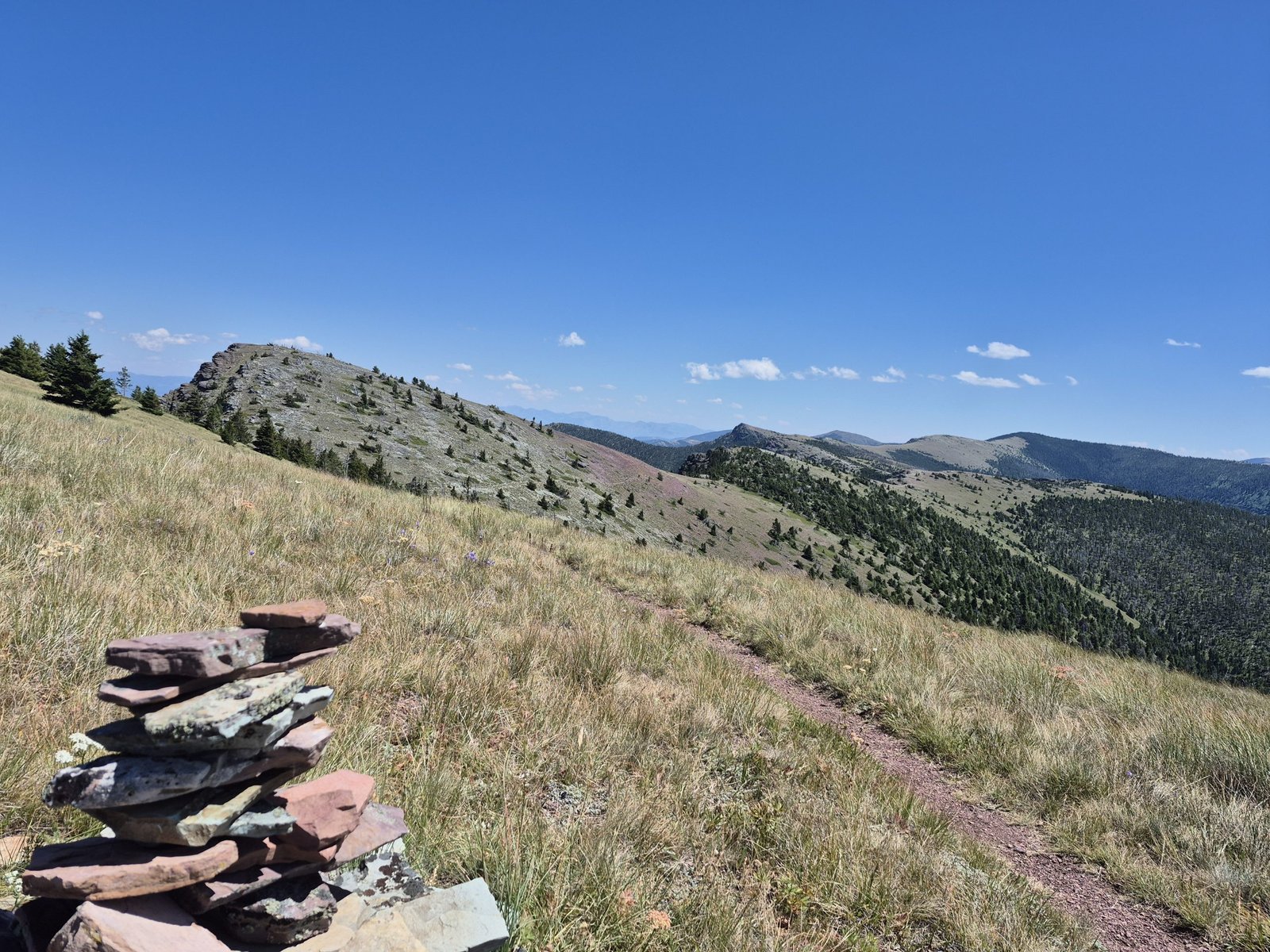
Hiking the CDT sobo Lincoln to Helena
Trail Town!
Lincoln was a great trail town! The owner of a bar lets hikers camp behind their building on a perfectly flat, green meadow. After setting up our tents there, we strolled through town in our rain gear on that hot sunny afternoon, to get to the free showers. Not our most glamorous moment for sure. But then we had a drink, a full bag of snack cucumbers and hummus on a bench behind the laundromat. Definitively a glamorous moment from a thru-hikers perspective!
We made sure to eat a lot of tasty town food in between all our tasks (laundry, charging electronics, resupply, communication with friends and family, blogging, planning the next section) and everywhere we were met friendly. While hobbling back to our tents, bellies full with good old greasy pizza, I couldn’t help but gush about the blinking lights, the buildings, the wood carving festival…! “Yeah I guess it’s very Americana,” Bugs grinned.
The hitch back to trail was easy: We danced and smiled by the side of the road with the “hiker to trail” sign that a dear friend of mine had written on my tent’s ground sheet back home. Nearly immediately, we got a parked pick-up driver’s attention. During the drive, we not only learned how he moved to Lincoln for love, but he had also a lot to say about the local mountain lion population. I tried not to listen too much to all his different anecdotes. I’m ok with bears now, but mountain lions just scare me.
It’s about to get painful
Bugs and I were ready to crush miles as we started hiking along the beautiful ridgelines allowing majestic views deep into Eastern Montana.
But soon, I got slower. My heel had already been bugging me in the last section, now the pain was getting excruciating! After 19 miles of slow hobbling and holding back tears I stumbled on a road. Bugs jumped out of the shadows on the other side of the road, looking worried.
“Are you ok?”
“No, not at all. I might need to camp here.”
Slowly, we made our way down to a spring. I was flinching with every step, leaning onto my trecking poles and limping heavily. At the spring, we met a lovely hiker again that we’ve last seen in East Glacier. He and Bugs were talking but I just sat on a stone holding my foot, trying not to start crying. I had taken the shoe off and the numbness from the constant pressure of hiking started to wear off. Now the heel was throbbing with intense pain, hot to the touch, although I was barely able to touch it. The others asked me something, but I was unable to understand nor speak, I just shook my head and bit my lip. They understood.
Desperate times – Desperate measures
It took me a while to breathe through the pain and ask Bugs Bunny if he could bring me some water to cool my foot. Then I fished the tiny nail scissors out of my pack and grimmly began to cut away the heel of my shoe.
“This is either the most stupid thing I could do out here. Or brilliant.” I thought to my self. After all, my shoes were probably my most crucial piece of gear. But I’ve given up so much to be out here, I was not going to let this pain stop me.
Turned out, it was the a genius move! So much so, that I cut my secound shoe shortly afterwards. Sure, I had to come up with a special lacing technique to keep everything in place. Sure, everything was a bit wobbly and unstable afterwards, which was hard for my ankles. Sure, a lot of dirt, pine needles and tiny stones would get into my shoes now. But I was able to hike out the next morning and continue since.
Short cuts and road walks
From then on, Bugs Bunny unleashed his alternate – finding – superpower, constantly looking for short cuts. With my still badly inflamed heel we stumbled along dirt roads, trying to avoid as much elevation gain as possible, since ascends hurt especially bad.
So we made our way to the Llama Ranch – apparently an Alpaca Ranch – and enjoyed our first time trail magic treat on their porch with fresh sandwiches and sodas.
Our unmarked alternates lead us into low and dry valleys, where eventually we ran out of water. It wasn’t after walking past several bones and skeletons of livestock that we finally found a trickle.
Tired from the unexpected complications we finally made it into Helena fir our first, well deserved zero day.
This website contains affiliate links, which means The Trek may receive a percentage of any product or service you purchase using the links in the articles or advertisements. The buyer pays the same price as they would otherwise, and your purchase helps to support The Trek’s ongoing goal to serve you quality backpacking advice and information. Thanks for your support!
To learn more, please visit the About This Site page.
Destinations & Things To Do
Foreign Tourist Arrivals in India Hit Record Levels in 2025: Insights into the Growth of Visitors from the UK, US, and Bangladesh, Their Spending, and Top Destinations Like Goa, Rajasthan, and More
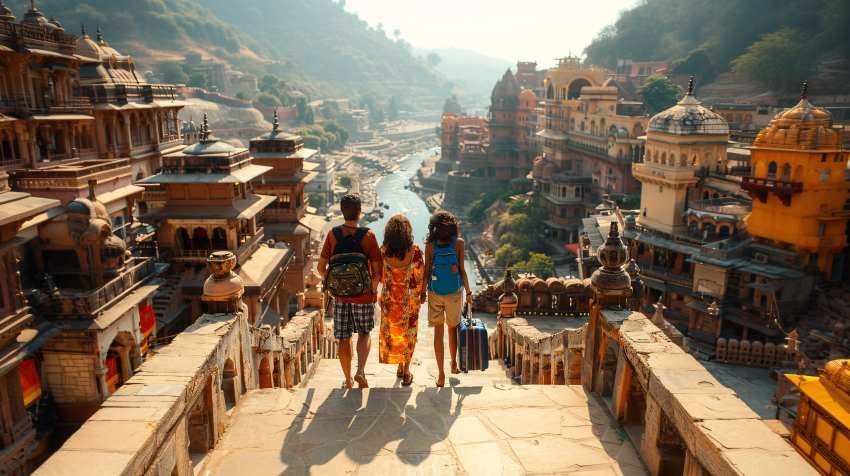
Published on
August 8, 2025 |
By: TTW News Desk
In 2025, India’s tourism industry has reached new heights with a record number of foreign tourists arriving in the country. According to the World Travel and Tourism Council (WTTC), India hosted 20 million international visitors this year, marking a significant increase from previous years. This surge is part of a broader trend of recovery in global tourism, with India experiencing growth that surpasses pre-pandemic levels.
For India, the rise in foreign tourist arrivals is a sign of resilience and the attractiveness of the country as a travel destination. The increase in tourism is particularly notable in several regions that were previously hit hard by the pandemic, with destinations like Goa, Rajasthan, and the Andaman and Nicobar Islands now seeing record numbers of international visitors.
In this article, we will explore where these tourists are coming from, their spending habits, and the impact on India’s tourism industry. We will also take a look at the rising popularity of lesser-explored destinations, and how they are shaping the future of tourism in the country.
A Strong Recovery: Who’s Visiting India in 2025?
India has always been a popular destination for international travelers, offering a rich mix of cultural heritage, natural beauty, and modern attractions. The country’s top tourism source markets have remained consistent, with significant numbers of visitors from the US, Bangladesh, the UK, Australia, and Canada. These five countries have been responsible for a large portion of India’s inbound tourism in 2025, with the US leading the charge.
Foreign tourist arrivals from the US alone amounted to over 1.8 million in 2025, according to the latest data. The US is followed by countries like Bangladesh, the UK, and Australia, which have consistently been major contributors to India’s tourism sector. The rise in tourists from countries such as Germany, France, Singapore, Nepal, Japan, South Korea, Italy, and Thailand further highlights India’s growing appeal as a global travel destination.
Interestingly, India has also seen an increase in tourists from emerging markets like Vietnam, Cambodia, the Philippines, and Laos. These regions are rapidly growing in terms of outbound travel, and as their middle class expands, more people are opting to explore destinations like India.
Seasonal Travel Trends: A Rise in Summer Visits
While India is a year-round travel destination, certain periods of the year see a surge in foreign tourist arrivals. For instance, the summer months of June, July, and August have proven to be particularly popular for tourists from Southeast Asia, who flock to India to escape the sweltering heat of their home countries. During these months, cities like Harbin in China also report a surge in arrivals, with visitors seeking cooler temperatures in Northern India, particularly in the Himalayan region and hill stations like Shimla, Mussoorie, and Nainital.
In addition to seasonal variations, India’s peak tourism months—especially December—continue to draw substantial numbers of international visitors. However, winter months aren’t the only busy period; many tourists prefer traveling during India’s off-peak seasons, when they can avoid the crowds while still enjoying India’s vibrant culture, landscapes, and unique experiences.
Tourism Spending: How Much Are Foreign Tourists Spending in India?
In 2025, Foreign Exchange Earnings (FEE) from tourism in India saw a considerable jump, with the total earnings increasing by 31.5% from US$21.36 billion in 2022 to US$28.07 billion in 2023. The rise in foreign tourist arrivals has contributed significantly to this boost, as international visitors spend on accommodation, transportation, dining, and cultural experiences.
On average, foreign tourists spend approximately Rs 2.90 lakh during their stay in India. The spending patterns of international visitors reflect a growing trend of longer stays and more immersive travel experiences. Many tourists from Western countries, such as the US, UK, and Germany, tend to spend more on luxury travel, high-end accommodations, and guided tours. Meanwhile, travelers from neighboring South Asian countries like Bangladesh and Nepal typically spend more on budget-friendly options, focusing on cultural sites and local experiences.
The increase in tourist spending is also a result of the growing number of international visitors who are seeking unique, high-quality experiences in India. From spiritual pilgrimages to luxurious retreats, tourists are willing to invest in experiences that provide deeper connections to the country’s diverse cultures and landscapes.
Top Destinations for Foreign Tourists in India
While major destinations like Goa and Rajasthan continue to see high numbers of foreign visitors, other regions in India are experiencing rising interest from international tourists. The Andaman and Nicobar Islands, for example, have seen a remarkable 27% increase in tourist arrivals in 2025 compared to the previous year. Known for their pristine beaches and unique ecosystems, these islands are becoming a more sought-after destination for tourists seeking nature, adventure, and relaxation.
In addition to traditional destinations like Agra and Varanasi, emerging locations such as the Ram Mandir in Ayodhya and the Buddhist Circuit in Uttar Pradesh are attracting significant foreign footfall. These destinations are increasingly being recognized for their historical and religious importance, drawing visitors from around the world who are eager to explore India’s rich cultural heritage.
The Impact of Digital and Charter Travel on Tourism Growth
One of the key factors behind the surge in foreign tourist arrivals is the increase in chartered flights, which have helped to bridge the gap in transportation between major cities and tourist destinations. These dedicated flight routes make it easier for visitors to travel between cities such as Delhi, Mumbai, and Jaipur, and remote areas like the Andaman Islands or Kerala’s backwaters.
The rise of digital platforms has also contributed to tourism growth. Tourists can now easily research, book, and plan their trips online, thanks to the growing number of travel apps and websites offering personalized itineraries, travel packages, and local experiences. Social media platforms like Instagram and YouTube have played a major role in promoting India’s lesser-known destinations, inspiring travelers to explore off-the-beaten-path locations.
The Role of Government Policies and Infrastructure Improvements
The Indian government has also played a significant role in promoting tourism through various initiatives and reforms. Simplified visa procedures, the introduction of e-Visa systems, and improvements in travel infrastructure have made it easier for international tourists to visit India. Additionally, tourism campaigns such as “Incredible India” have helped raise awareness of India’s rich cultural, historical, and natural attractions.
Improved infrastructure, including the development of airports, hotels, and transportation systems, has further bolstered India’s appeal as a tourist destination. The continued investment in infrastructure projects, particularly in rural and less-visited regions, is expected to make India even more accessible to international tourists in the future.
The Future of Tourism in India
The future of tourism in India looks bright, with foreign tourist arrivals expected to continue increasing in the coming years. The country’s diverse attractions, rich history, and vibrant culture make it an appealing destination for travelers seeking both relaxation and adventure. As tourism from Southeast Asia, Europe, and North America continues to grow, India is positioning itself as a major player in the global tourism market.
The integration of technology, improved transportation options, and an increasing focus on sustainable and cultural tourism will further enhance India’s attractiveness as a destination. Additionally, the rising popularity of experiential travel, including eco-tourism, wellness retreats, and cultural immersion, presents new opportunities for India to showcase its unique offerings to international visitors.
In conclusion, the growth in foreign tourist arrivals to India in 2025 reflects a broader trend of recovery and expansion in the global tourism industry. With increasing tourism from Southeast Asia, the US, the UK, and other parts of the world, India is poised to continue its rise as one of the most popular and dynamic tourist destinations in the world. As India’s tourism sector continues to develop, it will provide new opportunities for both international travelers and local businesses alike.
Destinations & Things To Do
The Laugavegur Trail | Day 4 | The Ending No One Would Imagine
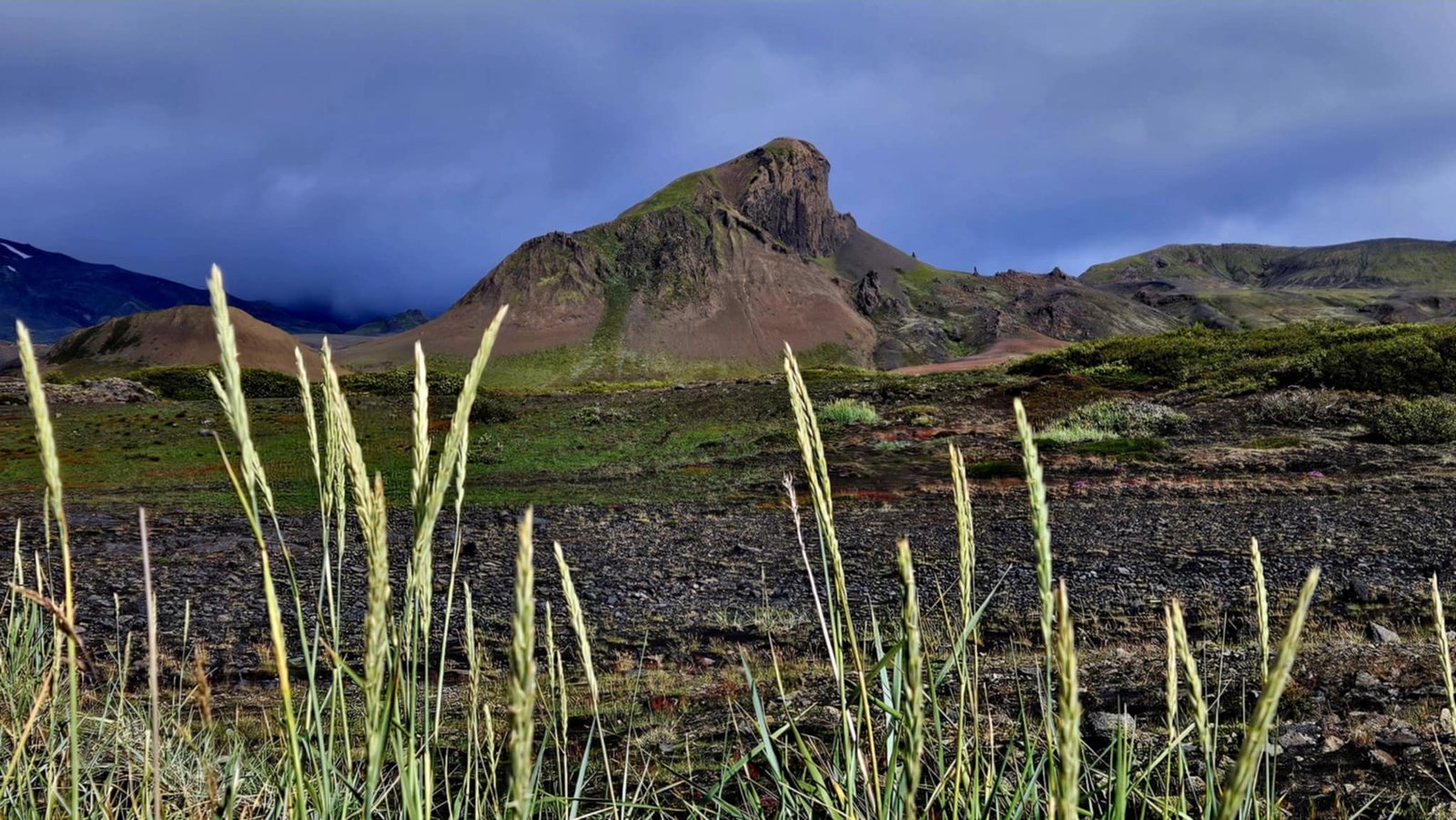
I woke to the sound of glacial runoff just outside my tent. The sky was gray, the wind steady, and the air in the upper 40s—no rain, just the kind of morning that felt purely Iceland. I moved slowly, not from pain, but to hold onto every moment.
It was the last day on the Laugavegur Trail. I missed dry shoes and hot showers, but I wasn’t ready to let go of the rhythm of walking, breathing, and becoming.
Now, take meds, apply the “blue magic,” make breakfast, organize gear, hit the bathroom,get water, pack up and hike.
Into the Ridges
The day started with a series of climbs—big and small ones. After crossing the first ridge, I dropped into a glacier-carved valley, only to climb right back out. Then came another ridge, where the world turned surreal. Greens and blacks painted the land like an oil pastel drawing under a sky with no sun. Somehow, the lack of light made everything more vivid, as if the landscape were lit from the inside out.
Soon, I descended steeply into another valley—no switchbacks, just loose rocks and black sand. At the bottom, a glacial river roared, wide and fast. There was a bridge that led me across the raging waters onto a trail that was only for the brave. An iron chain to the right and a 75 foot drop to the left.
Then the Beauty Broke Me
Eventually, the trail opened again. The cliffs gave way to glacier-capped ridges, velvet-green hills, and skies that stretched out in every direction.
And yet, I had no words left. Every twist in the trail revealed a new masterpiece: surreal colors, jagged ice, and a silence.
When I finally reached the top of one ridge, I flung my arms wide and yelled—not from exhaustion, but from pure joy. I had done it. Almost.
“I will finish,” I told myself. This was my very first thru-hike. I had earned every inch.
6.3 Miles to Go: The Ugly Cry
As I passed the 10K marker—just 6.3 miles to the finish—I began rehearsing a video I wanted to record for my children at the end of this journey.
“Hi Braelyn and Brevin, I love you”
But before I could finish, I broke.
The tears came like a flood.
I missed them. Then my mind shifted to he pain of the past: the divorce, the move, the grief. I saw my Daughter’s face the day I told her I was leaving. Her heartbreak still echoed inside me.
Clearly, I hadn’t let it go.
So I cried—loud, ugly, and raw.
The trail wasn’t just about hiking. It was healing.
5 Miles Left: The Sun Breaks Through
Just five miles remained.
As soon as I caught a signal, I messaged everyone who mattered:
“5 miles left. I’m going to finish!”
Right after I hit send, the clouds parted. Sunlight spilled across the trail, warming my face like the universe had just offered a high-five.
Of course, my blood sugar crashed at this point, so I paused to eat two of my three remaining glucose tabs. While resting, I spotted two familiar faces from Day 2—Haco and Nate from California. Just like that, trail magic returned.
Then, as if the trail were orchestrating a reunion, Josh and Kelly appeared. We had joked online about finding each other out here. And now, we had.
In that instant, I knew: I would make it.
2.5 Miles Left: Sheep!
Soon, the landscape softened. Grass spread wide. Lava rocks dotted the terrain. Sheep grazed without a care. And—finally—trees appeared.
However, the peace didn’t last.
Next came a gorge, followed by a steep ridge. And then, the air changed. Something was coming.
I climbed, and at the top of the ridge I saw it—a wall of clouds. They weren’t moving. They were waiting.
2.3 Miles: Man vs Nature
Iceland’s geography is nothing if not unpredictable. Storms here don’t simply pass—they can hover, caught between colliding wind currents, waiting for just the right moment. This one had clearly waited for me.
Suddenly, a wall of wind slammed into me from the left. My hat flew back. My pack cover ballooned like a sail. In an instant, I wasn’t hiking anymore—I was fighting. Man versus nature.
I dropped to the ground. Gravel tore into my knees as I crawled toward the only shelter in sight—a single rock. Sand whipped across my face as I curled behind it, pressing my cheek to the ground. The wind shrieked like something alive. My mouth filled with grit. My eyes burned. The trail that had empowered me all week now felt like it wanted me gone.
For a moment, I honestly believed I couldn’t go on. But then, I started singing a Cherokee song for protection from my ancestors. Gradually, the wind eased—just enough for me to move.
2.3 Miles (Part 2): The Warrior Within
Shaking, I stood. Then something cracked wide open inside of me.
“That’s all you got?!” I shouted into the clouds, arms flung wide like some unhinged Norse warrior. “I’m going across this ridge whether you like it or not!” Then came a tribal yell—loud, defiant, primal.
It was ridiculous. It was dramatic. But it worked.
Well… almost.
As I swung my pack back on, another gust struck—hard—like a punch from Njord himself. The weight and wind combo knocked me flat. Standing was no longer an option. So I bear-crawled with a pack loosely dangling from my body, back down the trail until I reached calmer air. Only then could I strap it back on properly. I was scraped up, windburned, and rattled—but not broken.
I still had a fight left in me.
2.3 Miles (Finale): The French Couple
Just when I thought I was alone, I saw them.
Two figures walking straight towards me—calm, steady. A French couple. No words exchanged. Just a nod.
And I followed.
Because with them, the fear shrank. Even though the wind still screamed, I wasn’t alone anymore.
1.5 Miles Left: Keep Going
Eventually, I reached one last obstacle—an icy, wide river. My camp shoes were destroyed, so I crossed barefoot. The water stabbed. But I didn’t fall. I didn’t stop.
Then, Thórsmörk appeared like a dream. Families laughed. The world felt normal again.Yet inside me, everything had changed.
I thought of every training run, every fuel packed meal, every plank and shakedown hike.Without a doubt—it had all been worth it.
1 Mile to Go: Quiet Survival
By the final stretch, my blood sugar had dropped dangerously low. I was completely out of snacks, with only one glucose tablet left. Two meals remained in my pack, but neither could help me now. My brain felt foggy. My legs barely responded. My body wobbled beneath me—unsteady, hollow, and weak.
I didn’t finish this hike on a high note. I finished in the middle of a quiet, invisible battle—one I fight every day. Diabetes doesn’t care how much you’ve trained or how prepared you think you are. I hadn’t accounted for how constant movement would accelerate my metabolism. I didn’t factor in the physical toll a windstorm would take on my body. By the time I realized it, I was already too far in.
The End: Survival Over Celebration
From there, my memories come in pieces. I remember climbing a set of stairs and passing a family that smelled like fresh Ivory soap. I heard someone say they couldn’t wait to get to the restaurant. I saw a hut and tents, and maybe even familiar faces—but the fog in my head was too thick to make sense of anything.
Suddenly, I was at the sign marking the trail’s end, asking someone to take my photo. I couldn’t stand straight. I tried to smile, but my body slumped. The photo turned out awful.
The version you see?
I created it on my phone.
When I finally made it to my bunk, I collapsed. Hands shaking, I tore open my last lunch and ate without tasting it. Then I just… sat. Staring at the wall. My face was numb, my lips tingling and my ears were ringing. I could hear voices around me, but none of it registered. I was there, but not really.
This wasn’t the triumphant ending I had imagined. There were no victory arms in the air. No tears of joy. No laughter or smiles. Just the quiet reality of survival. Of getting it done. Of giving everything I had—body, mind, and spirit.
I completed the Laugavegur Trail at approximately 2:00 p.m. (GMT) on Thursday, July 24, 2025.
Final Reflection: This Was More Than a Hike
Now it’s 9:48 p.m., and I’m sitting still. My body is destroyed, but my heart is full.
I need to honor the people I met—because they weren’t just fellow hikers. They were part of my story.
There was the Icelandic guide who survived an avalanche. Gloria from Italy, who spoke about trails like a fortune-teller. The Pennsylvania tribe—Barbara, Shirley, Laurie, Stacey, Tanya, Sherry, and Tracy—who felt like family.
Then came the San Diego solo hiker reconnecting with her mother’s roots. Gus and Jon from Belgium, hiking 300 miles because of a drunken night. The Hungarian hiker who let me charge my phone so I could call my kids. A Czech couple. A Danish family.
Brad and Caitlyn, who helped me on Day 2. Kiel, only 22, fearless and free—exactly who I want to become. Josh and Kelly from Arizona, who turned tea into friendship.
And finally, Katya and Todd. Lifers.
When I hugged them goodbye, I knew: this was rare.
Because this wasn’t just a hike.
It was a declaration—of who I am.
And tomorrow, I’ll still be a backpacker.
-

 Brand Stories3 weeks ago
Brand Stories3 weeks agoBloom Hotels: A Modern Vision of Hospitality Redefining Travel
-

 Brand Stories2 weeks ago
Brand Stories2 weeks agoCheQin.ai sets a new standard for hotel booking with its AI capabilities: empowering travellers to bargain, choose the best, and book with clarity.
-

 Destinations & Things To Do3 weeks ago
Destinations & Things To Do3 weeks agoUntouched Destinations: Stunning Hidden Gems You Must Visit
-

 Destinations & Things To Do2 weeks ago
Destinations & Things To Do2 weeks agoThis Hidden Beach in India Glows at Night-But Only in One Secret Season
-

 AI in Travel3 weeks ago
AI in Travel3 weeks agoAI Travel Revolution: Must-Have Guide to the Best Experience
-

 Brand Stories1 month ago
Brand Stories1 month agoVoice AI Startup ElevenLabs Plans to Add Hubs Around the World
-

 Brand Stories4 weeks ago
Brand Stories4 weeks agoHow Elon Musk’s rogue Grok chatbot became a cautionary AI tale
-

 Brand Stories2 weeks ago
Brand Stories2 weeks agoContactless Hospitality: Why Remote Management Technology Is Key to Seamless Guest Experiences
-

 Asia Travel Pulse1 month ago
Asia Travel Pulse1 month agoLooking For Adventure In Asia? Here Are 7 Epic Destinations You Need To Experience At Least Once – Zee News
-

 AI in Travel1 month ago
AI in Travel1 month ago‘Will AI take my job?’ A trip to a Beijing fortune-telling bar to see what lies ahead | China

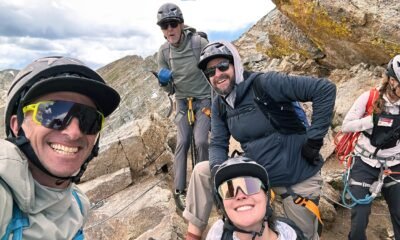

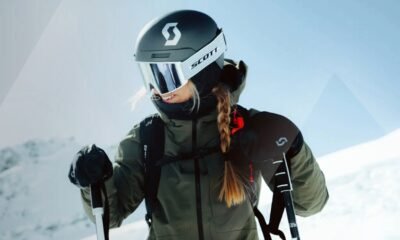





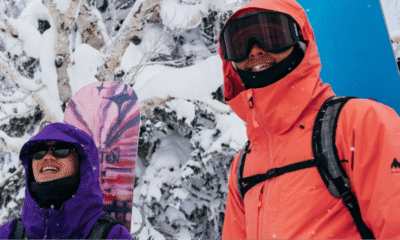

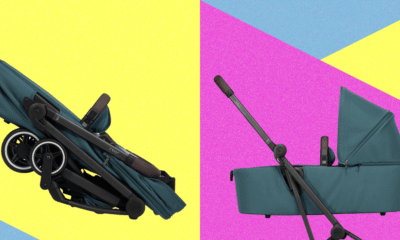

You must be logged in to post a comment Login